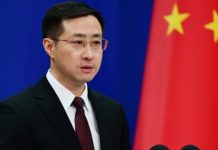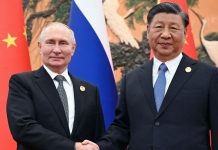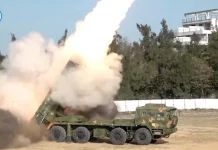From Our Correspondent
BEIJING: Over the past 20 years, the Pentagon’s annual report on China’s military development has always been one of Washington’s major avenues to peddle its “China threat” theory. This year’s edition is unsurprisingly no exception.
The recently released 200-page report is crowded with anti-China hogwash. By using such speculative words as “likely” and “probably” to misinterpret China’s national defense policy, it tries to mislead the world that the development of the Chinese military poses “serious implications” for global security.
Fear-mongering over China has always been the Pentagon’s trick to demand more appropriations from the U.S. Congress. A fabricated grave threat to world peace can also help Washington sell more weapons to its allies, and serves as an excuse for America’s pursuit of global domination. With the election day around the corner, many inside the United States assume that the White House is trying to use the report to drum up its getting-tough-on-China campaign in order to score political points. CNN commented earlier this week that the China report “published in the run up to the 2020 election as President Donald Trump is looking to make his increasingly aggressive stance towards Beijing a key campaign issue.” However, while Washington is selling its latest “China-scare” fiction to the world, it is hard to overlook such facts that the United States spent more on military than 144 countries combined in 2018 and maintains nearly 800 military bases in over 70 countries.
The world’s top military power also invaded sovereign countries based on lies, sent warships and fighter jets to far-flung waters to ignite regional tensions, and turned its back on its due global responsibility in arms control and nuclear non-proliferation. The Chinese military is in no way close to what the report has pictured. Beijing has persisted on a path of peaceful development, and its military expenditure faithfully reflects this truth.
China is now the world’s second largest economy, yet its defense spending has stayed much below the world average for years, and its defense budget growth rate has been falling in recent years.
An official defense white paper issued in July last year said China’s military has cut 300,000 personnel to keep the total active force at 2 million, with the number of personnel in the leading organs at and above regiment level down by about 25 percent and that of non-combat units by almost 50 percent. In the meantime, the Chinese military is faithfully implementing a defense-oriented policy. It has been committed to a self-defense nuclear strategy, vowing not to first use nuclear weapons at any time and under any circumstances.
China has been widely recognized for consistently maintaining its strong commitment to global nuclear nonproliferation and disarmament efforts. In early March, it issued a joint statement with France, Russia, Britain and the United States, reaffirming their pledge to honor the Treaty on the Non-Proliferation of Nuclear Weapons in all its aspects.
The Chinese military has also been working with others to safeguard world peace. China, with over 2,500 “blue helmets” across the world, is now the largest contributor of personnel to United Nations (UN) peacekeeping missions among the five permanent members of the UN Security Council.
Over the years, Chinese peacekeepers carried out missions to clear landmines in Lebanon, built roads in South Sudan, and cured the sick in the Democratic Republic of Congo. And the Chinese navy ships have also been on escort missions for vessels sailing in the Gulf of Aden.






